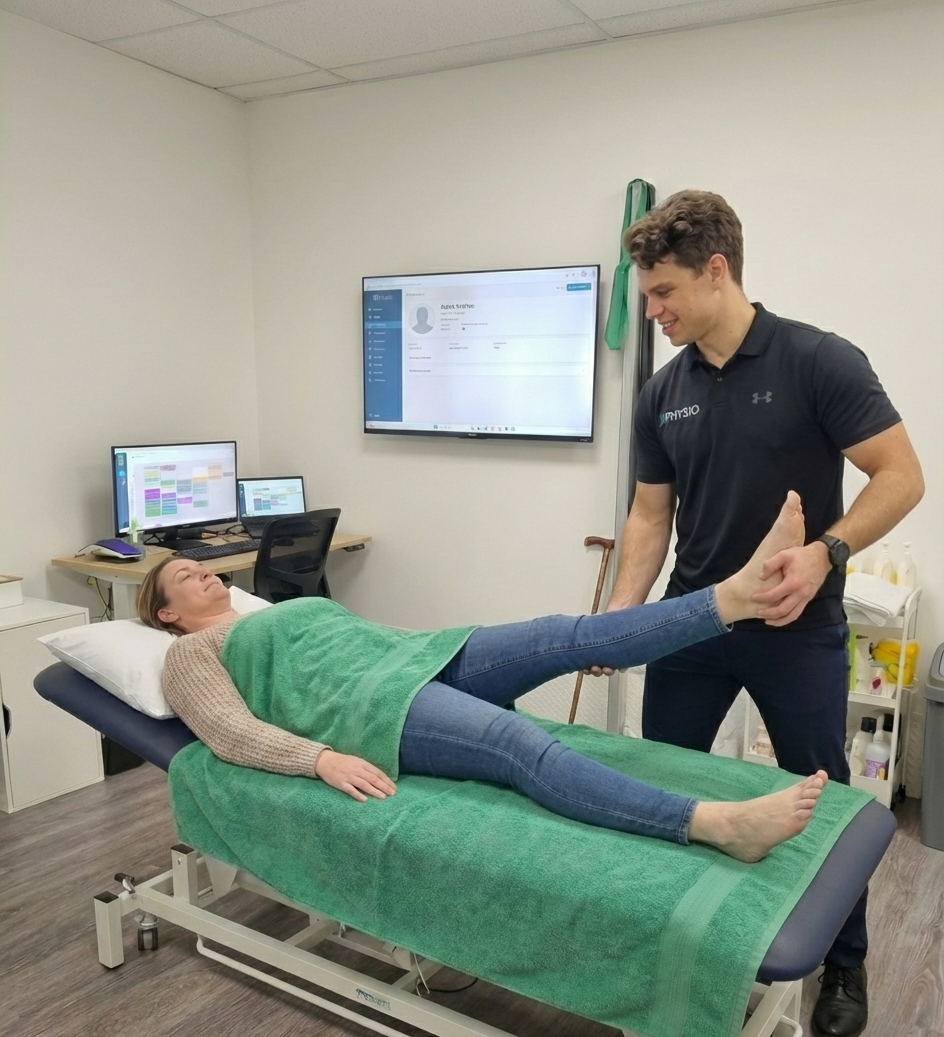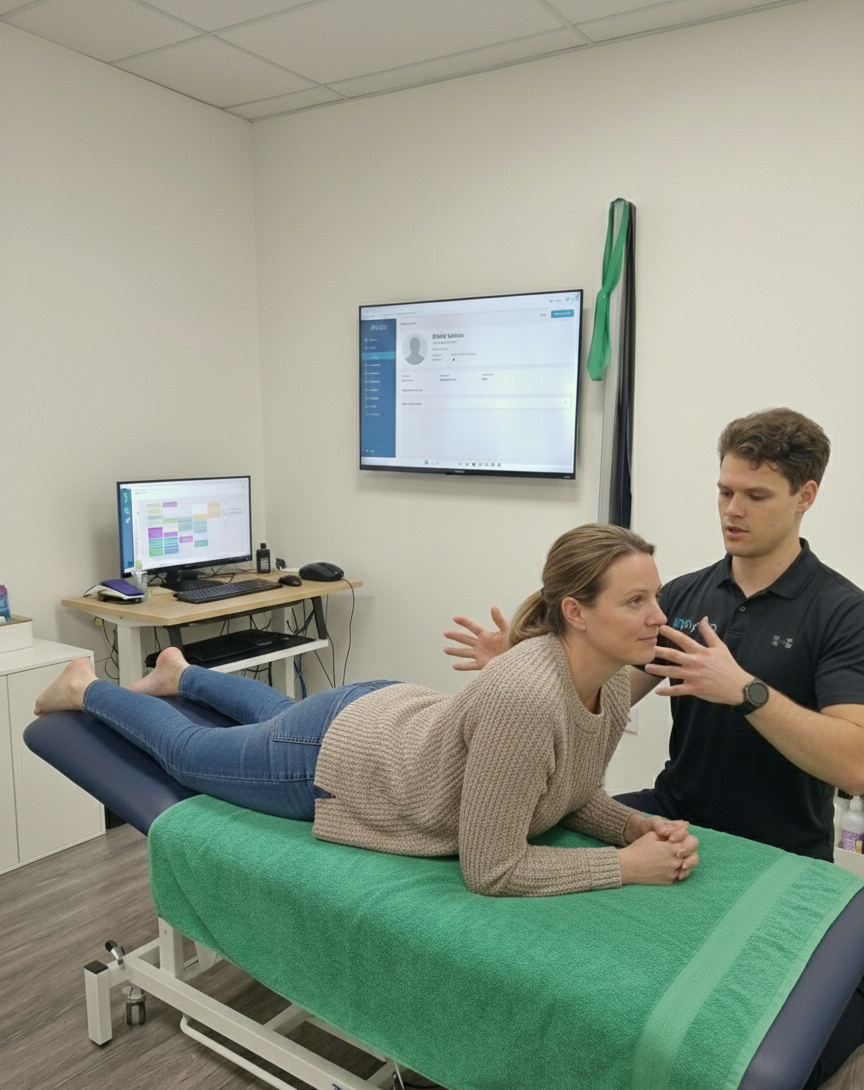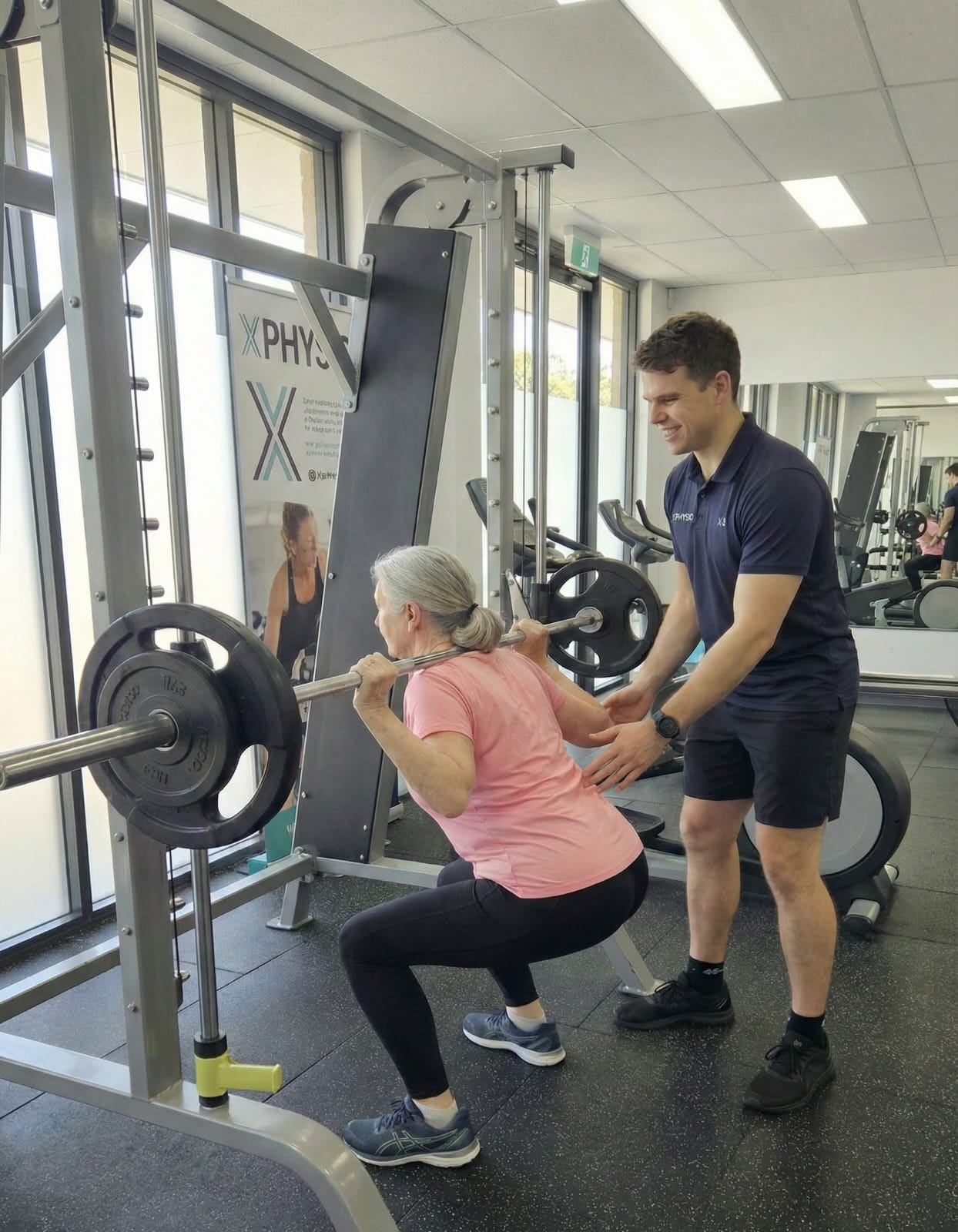
55) Conquer Chronic Conditions: How Physiotherapy Can Change Your Life
Living with a chronic condition can feel like a never-ending cycle of pain, fatigue, and frustration—but it doesn’t have to be. Physiotherapy is a powerful tool for managing chronic conditions, improving quality of life, and helping you take control again. In this blog, we’ll explain how physiotherapy works, what to expect, and how it’s helped real patients just like you.
What Are Chronic Conditions?
A chronic condition is a long-term health issue that often progresses slowly and lasts for more than three months. These can range from musculoskeletal disorders like osteoarthritis and chronic back pain to systemic conditions like diabetes, COPD, and fibromyalgia.
In Australia, 1 in 2 people live with a chronic condition, and many experience overlapping health issues that impact their daily life and mobility. The most common chronic conditions we see in the clinic include:
- Osteoarthritis
- Chronic lower back pain
- Rheumatoid arthritis
- Chronic fatigue syndrome
- Fibromyalgia
- Postural and mobility issues related to neurological disorders (e.g. MS or Parkinson’s)
These conditions often come with persistent pain, stiffness, reduced mobility, and fatigue—but physiotherapy can make a big difference.

Why Physiotherapy Matters for Chronic Conditions
While chronic conditions can’t always be cured, they can be managed effectively with the right care. That’s where physiotherapy steps in. We don’t just treat pain—we look at the bigger picture: your movement, your lifestyle, your goals.
How physio helps:
- Reduces pain and stiffness
- Improves joint mobility and flexibility
- Increases strength and stamina
- Enhances balance and coordination
- Helps with pacing and energy management
- Boosts mood and confidence through education and support
We focus on functional goals, whether that’s walking your dog, getting through a workday without pain, or returning to your favourite sport.

Meet Kim: A Real Patient, Real Results
Kim, a 52-year-old teacher, came to our clinic with fibromyalgia, a chronic pain condition that had been impacting her for over six years. She described constant muscle aches, morning stiffness, fatigue, and brain fog. Her energy levels were inconsistent, and she often cancelled plans due to pain flare-ups.
Initial Assessment:
- Global muscle tenderness
- Poor sleep hygiene
- Reduced lower limb strength
- Decreased tolerance to activity
- Anxiety around physical exertion due to previous flare-ups
What we did:
We started Kim with a graded exercise program, beginning with gentle stretches and low-impact activities like walking and hydrotherapy. As her tolerance improved, we incorporated reformer Pilates and light resistance training to improve muscle endurance. Education was a major focus—helping Kim understand pain science, energy pacing, and the importance of consistency over intensity.
We also worked on:
- Sleep hygiene strategies
- Diaphragmatic breathing and relaxation techniques
- Manual therapy to reduce muscle tension
- Postural retraining to reduce load on her neck and shoulders
Where Kim is now:
After four months of regular physio sessions, Kim reports fewer flare-ups, improved strength, and better confidence with daily movement. She’s returned to part-time teaching and now walks daily, something she hadn’t done in years.
The Biopsychosocial Approach
Physios use what’s called a biopsychosocial model. This means we consider:
- Biological: What’s happening physically in your muscles, joints, nerves, and tissues
- Psychological: How your mood, stress levels, and beliefs about pain are affecting your symptoms
- Social: Your environment, work situation, support network, and daily activities
By considering all three, we create a holistic treatment plan that suits your lifestyle, goals, and preferences.
Common Chronic Conditions We Treat with Physiotherapy
1. Osteoarthritis (OA)
A degenerative joint condition that causes pain, stiffness, and swelling, most commonly in the knees, hips, and hands.
How physio helps:
- Joint mobilisation
- Strength training to support the joint
- Activity modification
- Weight management support
- Hydrotherapy
Fun Fact: The Royal Australian College of General Practitioners (RACGP) recommends exercise as the first-line treatment for osteoarthritis.
2. Chronic Lower Back Pain
This is one of the leading causes of disability in the world. In many cases, imaging shows no clear “damage”—it’s often due to deconditioning, poor posture, and movement habits.
How physio helps:
- Core and glute strengthening
- Mobility drills
- Postural retraining
- Pain education
- Graded return to function
To learn more about lower back pain read our blog HERE.

3. Fibromyalgia
A complex pain condition marked by widespread tenderness, fatigue, and often mood or sleep disturbances.
How physio helps:
- Gentle, regular exercise (like walking or Pilates)
- Sleep hygiene education
- Relaxation strategies
- Gradual pacing strategies
- Empowering education to reduce fear of movement
4. Multiple Sclerosis and Parkinson’s Disease
Progressive neurological disorders that affect mobility, balance, and coordination.
How physio helps:
- Balance retraining
- Fall prevention exercises
- Walking drills and gait re-education
- Flexibility and functional movement
- Strengthening and endurance programs
Building Long-Term Strategies
Managing a chronic condition is like running a marathon, not a sprint. It’s about building routines, staying consistent, and adjusting your goals over time.
We help you:
- Develop a home exercise plan you can stick to
- Set realistic, achievable goals
- Celebrate progress (not perfection!)
- Learn how to manage flare-ups without panic
- Connect with community support or local exercise classes
Exercise Prescription: The Gold Standard
Exercise is often referred to as a “miracle drug” for chronic conditions—and for good reason. Regular physical activity helps:
- Reduce inflammation
- Improve sleep quality
- Increase energy and endorphin levels
- Boost cardiovascular and metabolic health
- Decrease anxiety and depression symptoms
Your physio will design a tailored exercise program, which may include:
- Walking, swimming or cycling
- Mat or reformer Pilates
- Resistance band or weight-based strengthening
- Tai Chi or yoga for flexibility and balance
- Core and posture work

The Importance of Education
Fear of pain often leads people to stop moving altogether. Unfortunately, this usually makes things worse. That’s why education is one of the most powerful tools we use in physiotherapy.
We help you understand:
- What your condition means
- Why pain doesn’t always equal damage
- How to safely push through discomfort
- When to rest and when to move
- How to stay active even during a flare-up
What to Expect in Your First Physio Appointment
If you’ve been living with a chronic condition and haven’t tried physiotherapy before, here’s what to expect:
- Comprehensive assessment of your condition, mobility, lifestyle and goals
- Hands-on treatment if needed to reduce pain and tension
- Exercise education and take-home plan
- Goal setting to keep things realistic and focused
- A caring and collaborative approach—we’re here to guide, not lecture
Take the First Step
Chronic conditions can feel overwhelming, but you don’t have to go it alone. Physiotherapy gives you the tools, support and confidence to take control and live life on your terms. Whether it’s returning to work, enjoying a walk, or simply getting a better night’s sleep, we’re here to help you get there.
Final Words
Living with a chronic condition doesn’t mean giving up on progress. With the right physiotherapy plan, support, and education, you can feel stronger, move better, and reclaim your quality of life.
Give us a call today on 9806 3077, or book online, just CLICK HERE



